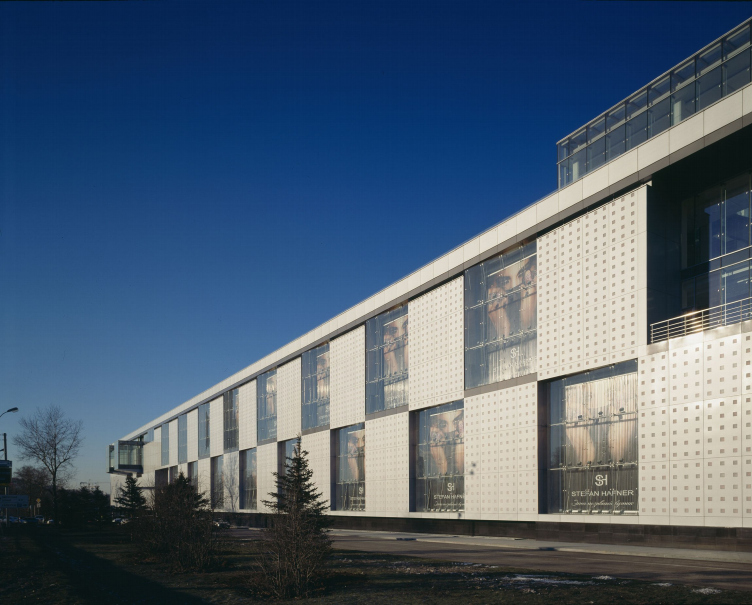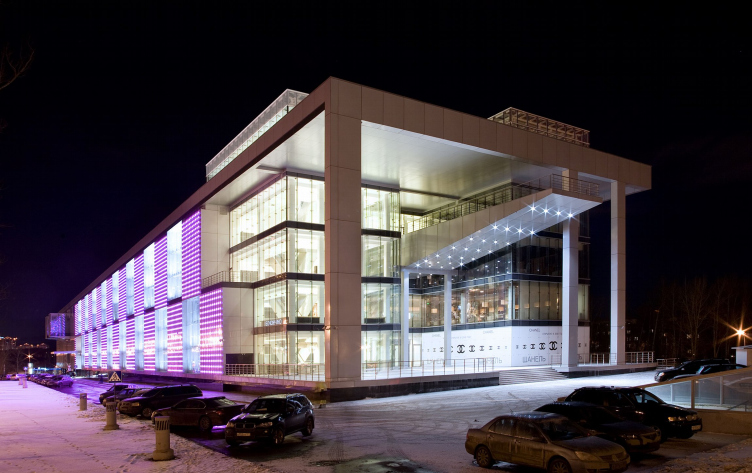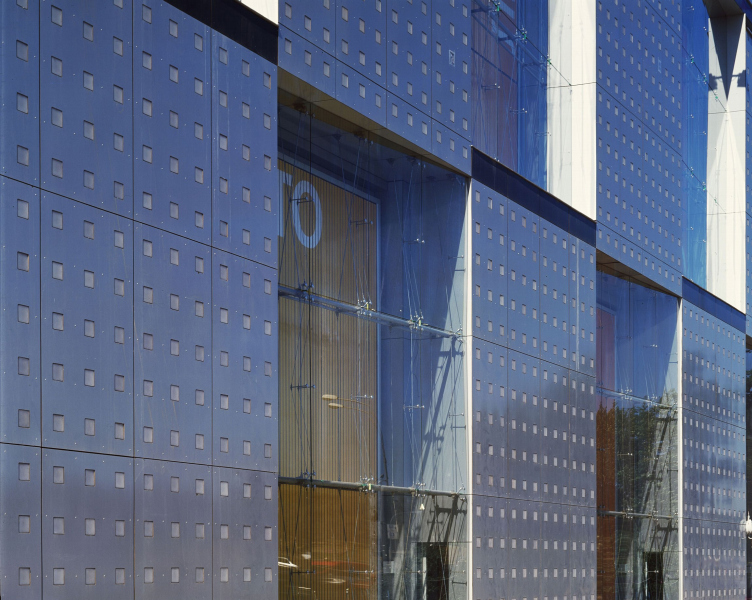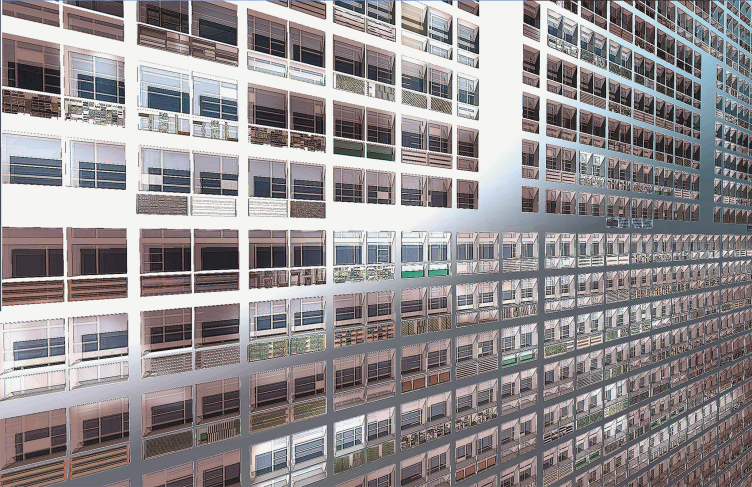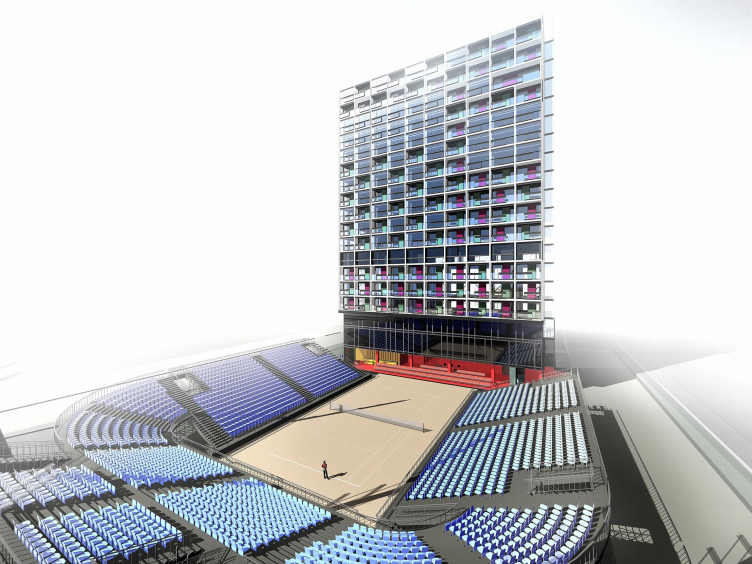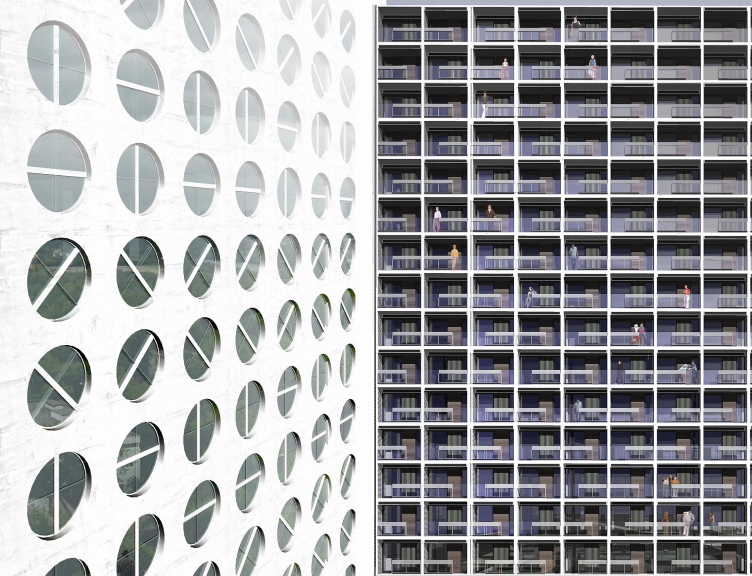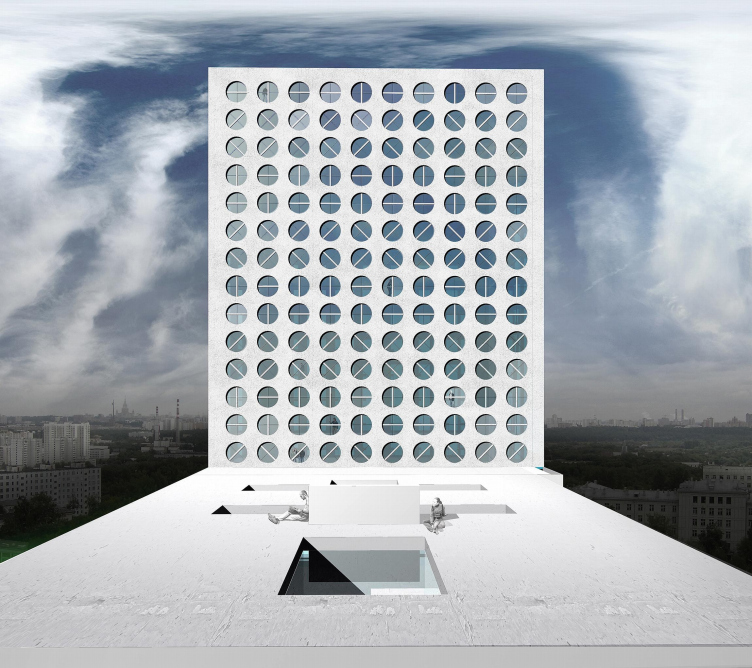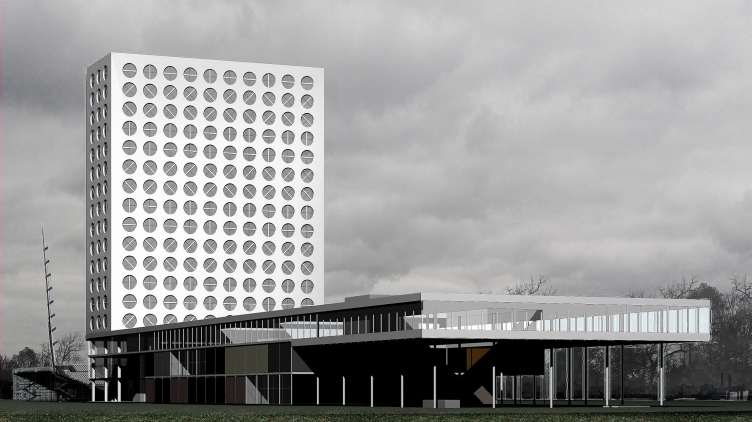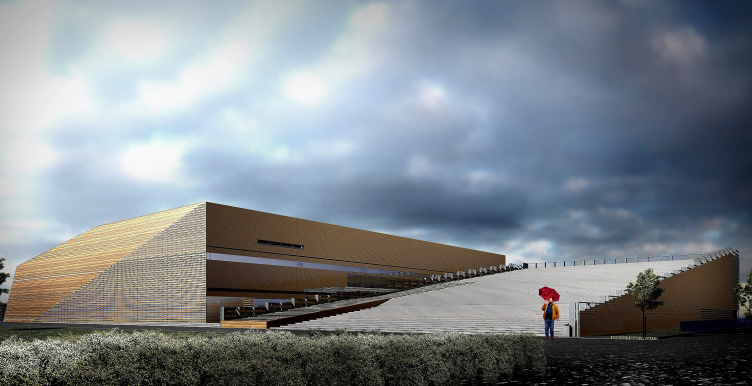That’s their problem.
My point is this. At the same time, you are a committed fan of contemporary architecture, but not of distortion of space or non-linearity but of rectilinear Neomodernism – of structuralist architecture, I would say.
I don’t really know what Neomodernism is. But I could agree to Neostructuralism – if there is such a term.
It’s the kind of architecture in which everything is simple and clear. Here it’s difficult to say something new after the founding fathers of Modernism.
It’s generally the case that a building is something new. An unrepeatable combination of circumstances. And then, contemporary architecture is bound up with progress. There’s always something new appearing.
Yes, I understand: new square metres, new technologies, new functions, contemporary materials, unrepeatable combinations of electricity networks, water supplies, sewerage systems, and radically new management systems. It’s all extremely fascinating. But it’s not exactly where you’d expect to come across dandyism. Aestheticism, that is.
I don’t at all think that technology is what’s most important. Although, of course, you can’t help wanting to be up to standard, in the vanguard of progress. But it’s in this that we encounter difficulties deriving from our economy, the lack of steady knowledge and skill in working with modern materials and components. In our projects technological innovation has not yet become a natural part of the artistic concept. I’m sure this will come in time, but if we today take the view that innovative technology is what’s most important, that means that we Russians shall have to do without architecture. Management is a separate subject, being subordinate to architecture. I don’t consider myself a skilled negotiator, and this is something that holds no interest for me. But what is unrepeatable is form, above all.
But what exactly can be unrepeatable here? What new forms have arisen in modern architecture compared with Constructivism or Modernism in general. Respect for context? The contextual approach?
No, it’s not a matter of context either. In general, I think that orientation on contextuality is where we go wrong today. It leads to dullness, stagnation, and, most unpleasantly of all, progressive deterioration of the context. If you try to be more modest, less conspicuous than your neighbour, the next step thing to happen will be that your (very modest) work of architecture will become the context, the next architect will create something even more modest, and so on. Buildings will become increasingly less conspicuous – and worse. I can agree that today’s Modernism, including its superior versions, is based on very, very easily reproducible techniques. Techniques that are so easy that they can be turned into a canon. Or, at the very least we might formulate and classify those persistent techniques and combinations of forms which have become standards over the course of time and which are beloved of absolutely the entire architectural establishment. And it hardly needs to be said that canonicity must contradict the idea of newness…
But where, then, is there room for quest? A canon is like military uniform. Everyone is dressed identically.
No, the exact opposite is true. It’s precisely at this point that you get space in which to conduct a quest. You have to change your point of view. Take, for instance, Classical architecture. I grew up in St Petersburg, and my first architectural impressions relate to Classicism. In Classicism no one looks for new forms. They look for perfection in forms that have already been found. Proportions, relations between masses, textures, and spaces – within the canonical Classical prototypes. Perhaps it would be worth looking at modern architecture from this point of view.
Would it look any different?
In fact, yes! Radically different. Take Constructivism. Strangely enough, Russian Constructivism has never been much of an influence on me. Of course, we are justly proud of it. But the Constructivists were inventors. They invented a new form, but did not manage to find the correct proportions of windows, apertures, columns. Their work is very raw. Apart from Leonidov, who had a real feeling for architecture, but never had anything actually built. [The architecture critic] Khan-Magamedov once wrote that modern architecture is still only beginning and Constructivism and Modernism are like ancient classics. Like the first Doric temples of the 7th-6th centuries BC – they’re very expressive, but very coarse. They established the canon, but were followed by the architecture of the age of the Parthenon. This is a direction that I would consider worth moving in.
Yes, there are still plenty of places to head for. A long journey ahead of us.
You’re being ironic. In actual fact, there were architects who took decisive steps. Incidentally, for me Le Corbusier is not so much an inventor as someone with unique aesthetic intuition. He is, of course, innovator No. 1, but he nevertheless has an amazing sense of harmony and proportion. And when he began having ideas on the subject of the modulor, this was simply his desire to receive mathematical confirmation of his artistic intuition. There is another person like him – Mies. I adored Mies van der Rohe until I was weak in the knees. I am not at all a sentimental person and always thought that nothing could melt me, but when I first found myself in Barcelona and saw his pavilion, I could no longer understand the point of our doing architecture!
Yes, of course, this is aesthetic architecture. Everything in it has been reduced to incredibly elegant formula. And it’s the elegance that’s the main thing; the formula itself is fairly elementary. On this subject I have a question for you. In the 70s criticism of Modernism and the rejection of it were a reaction to this elementariness, to the desire to reduce complexity and contradiction to, as Venturi put it, an elementary rectangular grid. And even the return to contemporary architecture that we experienced in the 90s was based on a rejection of this elementariness. This is where our non-linear architecture comes from. But your take is that all we need to do is merely polish the formulae of the simple Modernist grid?
No. That’s not it. In fact, everything is much more complex. First, not a grid. At least, not for me today – not a grid. A matrix, more like. A multidimensional matrix – two-, three-, or four-dimensional. Function, construction, urban-planning situation, physical space, human behaviour – all this has dimensionality; each element has its own – so you get a multitude of grids with different dimensionalities. The objective is to discover these grids, organize them, relate them to each another, and lay them on one another. The result is a multidimensional object with many different scales – relating to distance, time, function, structural elements. Each unit is a complex number. And it’s very important at this level to find the right scale of proportions to ensure that all units relate to one another harmoniously. These are complex harmonies where a single element fits into several harmonic sequences at the same time. As in classical music.
So you end up with a complex order instead of a simple one. Instead of a multiplication table, you get a table of logarithms. But it’s still a table. As for the essence of the Neomodernist revolution – although you’re not fond of this term, – it lay in an attempt to introduce the principle of indeterminacy, chance, unpredictability into modern architecture. An attempt to step away from the table into the chaos of the non-linear process.
Exactly. I’ve been talking only about what comes first. First, the matrix. But this is not yet architecture. It has neither beginning nor end; it’s the law for constructing a world for a given particular case, but it is not that world itself. There are laws of physics and there is the earth, which exists in accordance with these laws. And, when you know the laws, you can say a lot about the properties of the earth, but you cannot predict what it will look like. It’s the same here. For me the principle of dualism is important. There is both matter and spirit. The matrix is matter, the laws by which matter is constructed. And then there is life itself, which is unpredictable, incidental; this is spirit. It’s how an object lives. First, the matrix, and then life, which is the most interesting part! It’s precisely the unpredictable, unexpected, incidental movement of architectural matter that is the sign of the spirit. It’s important not to lose it, not to drown it in the grid. You have to contain this unpredictability, non-logicality in the rigid logic of the matrix that you have yourself created. Miss out a cell. Permit something not to be part of the matrix, to live its own life. Emphasize the weak beat, as in music. Here there’s a whole host of possibilities; it’s fascinating. When you arbitrarily fill in a proper matrix with various beautiful things, it can lead to unexpected, unpredictable, surprising results. In my projects I always try to surprise. There’s no art without surprise.
Are you a philosopher?
No, I’m an architect. For some reason, critics are fond of defining architects by other professions, seeing them as artists, businessmen, academics, or politicians. I’m an architect. In my opinion, this is the very essence of the architectural profession – to find the laws of life in the space that has been allocated to you, to impart to them the refined precision of the golden section, and then allow life to flow through the space in whatever way it will. This is difficult to describe; but you can see it immediately in the design for a building.
Have any contemporary foreign architects been an influence on you?
No, I don’t think so. Le Corbusier, of course, but you’re asking about contemporary architects. I have somehow never needed such influences. I worked for Bofill’s office in Paris, but Bofill has very different tastes from me. I don’t try to create architecture that would resemble anyone else’s, even if a client likes a particular prototype. And I don’t try to create architecture that doesn’t resemble anyone else’s. I simply look for what needs to be done and do it.
So your architecture is your own, Russian?
No, that’s not true either. I don’t try to create specifically Russian architecture. I simply create contemporary architecture. In Russia – although I could also create it somewhere else.


